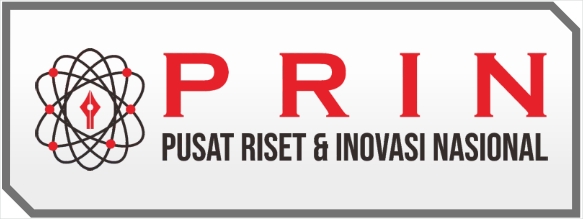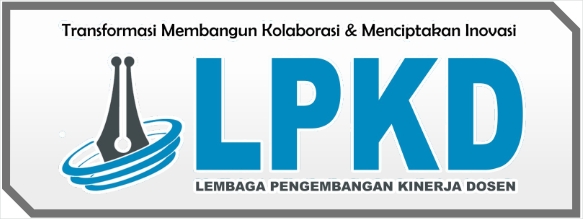Content Analysis of Gorontalo Dikili Manuscript and the Relevance to Message and Values of Kindness
DOI:
https://doi.org/10.55606/jurribah.v1i2.374Keywords:
Content Analysis, Dikili Gorontalo, Manuscripts, Messages, Values, Oral TraditionsAbstract
The study aims to analyze the content of the Gorontalo Dikili manuscript and its relevance to messages and values of kindness. This research is library research with a descriptive qualitative approach. Primary data were collected and identified through documents in the form of manuscripts and written with APG script, totalling 10 main themes and containing 297 couplets. Secondary data in the form of video recordings
The data is processed following the stages of philological analysis by reading the manuscript, identification, editing, and interpretation. The interpretation technique is done by directed content analysis. The results of this study indicate that the manuscript in Gorontalo contains messages and values of kindness that can be used as lessons and examples in following the sunnah of the Prophet. The values of goodness include: The value of spiritual education is related to patience and independence as an orphan. Moral values, in the form of fair behaviour in acting and behaving. Cultural values are related to the recommendation of circumcision which is useful for maintaining genital hygiene for men, maintaining the respectfulness of women to avoid disgraceful attitudes and traits, and tolerant behaviour toward adherents of other religions. Social value is found in the sincere attitude of giving and willing to share, and always giving benefits to others.
This research has implications for information about the contents of the dikili manuscript which has not been revealed, so the celebration of the prophet's birthday by re-reading the prophet's life history text needs to be preserved.
References
Al-Marshafi, S. (2001). A Hadits Al-Khitan Hujjiyatuha Wa Fiqhuha. Penerj. Amir Zain Zakariya, Khitan, Cet II, Jakarta: Gema Insani Press.
Asfar, A. . I. T. (2019). Analisis Naratif, Analisis Konten dan Analisis Semiotik Penelitian Kualitatif. Universitas Muhammadiyah Bone, January. https://doi.org/10.13140/RG.2.2.21963.41767
Ayuba Pantu, M. A. (2015). Kearifan lokal dalam naskah dikili. https://lp2m.iaingorontalo.ac.id/kearifan-lokal-dalam-naskah-dikili/
Bakry, M. (2021). Tradisi Sayyang Pattu ’ du ’ dalam Peringatan Maulid di Kecamatan Balanipa Kabupaten Polewali Mandar. Shatuna: Jurnal Ilmiah Mahasiswa Perbandingan Madzhab, 2(1), 16–27.
Bangun, D., & Berutu, L. (2018). Dari Praktik Khitan Pada Pria Non Muslim Di Kota Medan). Ready Star-2: Regional Development Industry & Health Science, Technology and Art of Life, 412–417.
Baruadi, M. K. (2014). Tradisi Sastra Dikili dalam Pelaksanaan Upacara Adat Maulidan di Gorontalo. Elharakah: Jurnal Budaya Islam, 16(1). https://doi.org/http://dx.doi.org/10.18860/el.v16i1.2760
Baruadi, M. K. (2016). Tradisi Sastra Dikili dalam Pelaksanaan Upacara Adat Maulidan di Gorontalo. El Harakah, 17(50), 1–21.
Baso, A. S. (2021). Studi Argumentasi Pembelaan Terhadap Perayaan Maulid. Jurnal Ilmiah Islamic Resources, 18(2), 146–157. https://doi.org/http://dx.doi.org/10.33096/jiir.v18i2.114
Beck, H. (2015). Traditionally, three Islamic festivals are celebrated each year as. Pluralism and Identity: Studies in Ritual Behaviour, 67, 261.
Bengtsson, M. (2016). How to plan and perform a qualitative study using content analysis. NursingPlus Open, 2, 8–14. https://doi.org/10.1016/j.npls.2016.01.001
Bouti, M. R. (2021). Dikili dan Tolnagga : Nilai-nilai Bimbingan dan Konseling dalam Tradisi Masyarakat Pelita Jaya Bone Raya. Jurnal Bimbingan Dan Konseling Islam, 11(1), 48–59. http://jurnalfdk.uinsby.ac.id/index.php/jbki/article/download/559/417
Dahlan, A. A. (n.d.). Majmu’ah Maulud Syaraf al-Anam. Indonesia: Safakarya, Tt.
Darmiyati Zuchdi, E. D., & Afifah, W. (2021). Analisis Konten Etnografi & Grounded Theory, dan Hermeneutika Dalam Penelitian (Vol. 314). Bumi Aksara.
Franzosi, R. (2017). Content Analysis: Objective, Systematic, and Quantitative Description of Content (I. T. R. handbook of language and Politics (ed.)). Routledge.
Gale, B., & Wood, R. C. (1994). Managing customer value: Creating quality and service that customers can see. Simon and Schuster.
Hikmalisa, D. K. M. I. (2022). Persfektif Kesetaraan dan Keadilan Gender Husein Muhammad dalam Silang Pendapat Khitan Perempuan. Wahana Islamika: Jurnal Studi Keislaman, 8(1), 86–109.
Hinta, E. (2012). Simbol Verbal Dan Nonverbal Dalam Ritual Maulidan Sebagai Konteks Tradisi Lisan Gorontalo. Prosiding Seminar Internasional Multikultural & Globalisasi 2012, 2, 144–157.
Hula, I. R. N., & Helingo, A. (2022). Kitabi Lo Dikili (Ditransliterasi dari Tulisan Tangan ke Tulisan Arab Pegon Modern) (S. Adawiyah (ed.); 1st ed.). Language Development Center. https://pusatbahasa.iaingorontalo.ac.id/
Hula, I. R. N., Helingo, A., Jassin, S. A., & Sarif, S. (2022). Transcription of Pegon Gorontalo Arabic Orthography, Malay and Arabic Standard: A Contraceptive Linguistic Analysis. ‘A Jamiy: Jurnal Bahasa Dan Sastra Arab, 11(2), 322–341. https://doi.org/10.31314/ajamiy.11.2.322-341.2022
Hula, R. N., Djafar, F., Damopolii, M., Mariana, A., Rohman, A., & Gorontalo, K. (2021). The Effect of Inter-Religious Tolerance Development on Students in Gorontalo City Pengaruh Pembinaan Toleransi Antar Umat Beragama Pada. 21(2), 302–325.
Isnaini, M. (2013). Internalisasi Nilai-nilai Pendidikan Karakter di Madrasah. Al-Ta’lim Journal, 20(3), 445–450. https://doi.org/10.15548/jt.v20i3.41
Januardi, T. (2022). Sebuah Perspektif Nawal El Saadawi: Khitan Perempuan Antara Syariat dan Adat. Jurnal Iman Dan Spiritualitas, 2(3), 361–372. https://doi.org/10.15575/jis.v2i3.18649
Kadir, F. K. A. (2017). Proceeding of International Conference of Empowering Islamic Civilization. Kaedah Taqrib Ra’yai Dalam Polimik Bid’ah Dalam Masyarakat Melayu, 113. http: //www.inspire.unisza.edu.my
Katz, M. H. (2017). The Birth of the Prophet Muhammad, Devational Piety in Sunni Islam. Routledge is an imprint of the Taylor & Francis Group, an informa business. https://openmaktaba.com/wp-content/uploads/books/Islamic-English-Books
Laitinen, A. (2008). Strong evaluation without moral sources. In Strong Evaluation without Moral Sources. de Gruyter.
Locke, E. A. (2009). Principles of Organizational Behavior (1st ed.). Wiley Online Library.
Mahmud, Ramli, Asmun Wantu, Y. S. (2022). Mongubingo Dalam Perspektif Budaya Masyarakat Adat Gorontalo. Jurnal Civic Education: Media, 6(1), 11–19.
Muda, L. (2020). Female Circumcision: Mopolihu Lo Limu and Mongubingo Customs in Building Leadership Behavior. El Harakah (Terakreditasi), 22(1), 39–57. https://doi.org/10.18860/el.v22i1.8785
Nonci, M. H. (2013). Maulid dan Natal (Studi Perbandingan, Islam dan Kristen). 8.
Nur Azizah, L. (n.d.). Pro Kontra Maulid NabiMencari Titik Kesepahaman (Vol. 109). Lentera Islam.
Perumus, T. (2008). Pohutu Aadati Lo Hulondalo Tata Upacara Adat Gorontalo, Hasil Seminar Adat Gorontalo 2007. Pemda Kabupaten Gorontalo, Forum Pengkajian Isam Al-Kautsar Gorontalo.
Plumins, M., & Sceulovsb, Deniss, E. G. –Sarkanec. (2018). Competitiveness Defenition’ and Qualitative Content Analysis. International Scientific Conference Economics and Management, October.
Rachmadhani, F. (2020). Konsep Bid’ah Perspektif Muhammadiyah; Kajian Fatwa Majelis. Kalimah: Jurnal Studi Agama-Agama Dan Pemikiran Islam, 18(1), 26. https://doi.org/http://dx.doi.org/10.21111/klm.v18i1.3433
Rawandhy, I., Hula, N., & Mariana, A. (2020). The Beati Tradition in North Gorontalo District ( Ethnographic Study of Processions and Verbal Meanings of Tuja ’ i ) Tradisi Beati di Kabupaten Gorontalo Utara ( Studi Etnografi terhadap Prosesi dan Makna Verbal Tuja ’ i ). Al-Ulum, 20(1), 295–315. https://doi.org/https://doi.org/10.30603/au.v20i2.1743
Sabiq, A.-S. (1986). Fiqh us-Sunnah: purification and prayer (Vol. 1). American Trust Publications.
Safa, N. H. A. (2021). Al-Mafhum al-Sahih li al-Bid’ah wa Mawqif al-’Ulama Minha. Diirasat Islamiah: Jurnal KajianKeislaman, 2(April), 1–10. https://doi.org/https://doi.org/10.5281/zenodo.5166446
Suriadi, A. (2019). No Title. 17(1). https://doi.org/10.18592/khazanah.v16i2.2324
Vaismoradi, M., D, P., Ms, N., Bs, N., Turunen, H., D, P., Bondas, T., & D, P. (2013). Content analysis and thematic analysis : Implications for conducting a qualitative descriptive study. 398–405. https://doi.org/10.1111/nhs.12048
Yunus, M. (2019). Peringantan Maulid Nabi (Tinjauan Sejarah dan Tradisinya di Indonesia ). Humanistika, 5, 35–41. https://doi.org/https://doi.org/10.36835/humanistika.v5i2.46
Zaim Elmubarok, D. Q. (2020). Bahasa Arab Pegon Sebagai Tradisi Pemahaman Agama Islam Di Pesisir Jawa. Lisanul’ Arab: Journal of Arabic Learning and Teaching, 9(1), 61–73. https://doi.org/10.15294/la.v9i1.39312
Downloads
Published
How to Cite
Issue
Section
License
Copyright (c) 2022 JURNAL RISET RUMPUN ILMU BAHASA

This work is licensed under a Creative Commons Attribution-ShareAlike 4.0 International License.

















